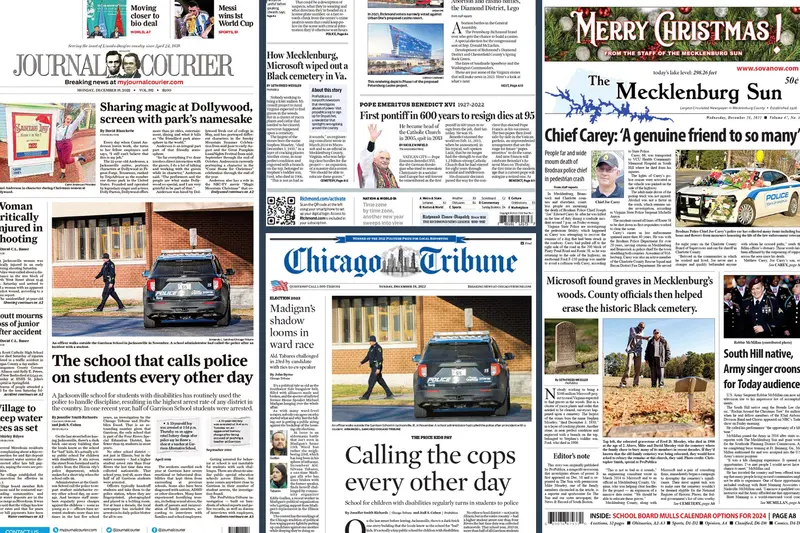News Articles for Beginners
News Articles for Beginners
Blog Article
Facts About News Articles Revealed
Table of ContentsGetting The News Articles To Work10 Easy Facts About News Articles ExplainedA Biased View of News ArticlesThe Best Guide To News ArticlesNot known Facts About News Articles
Good knowledge of various subjects offers trainees an one-upmanship over their peers. Although electronic and social networks are readily available, we should not forget how crucial it is to review the papers. Moms and dads should try and inculcate the routine of reviewing a paper as a daily routine to proceed the heritage of the adored print tool.News tales additionally consist of a minimum of among the following vital features loved one to the intended target market: proximity, importance, timeliness, human interest, curiosity, or effect. The related term journalese is occasionally made use of, usually pejoratively, to describe news-style writing. An additional is headlinese. Newspapers typically stick to an expository writing design.
Within these limitations, information tales also aim to be comprehensive. Amongst the bigger and a lot more revered papers, fairness and balance is a major variable in presenting info.
Papers with an international target market, for instance, often tend to make use of an extra formal design of writing. The specific choices made by a news outlet's editor or content board are usually accumulated in a design overview; usual design guides consist of the and the US News Style Publication. The main goals of news writing can be summed up by the ABCs of journalism: accuracy, brevity, and clearness.
9 Easy Facts About News Articles Shown
As a regulation, reporters will certainly not use a lengthy word when a short one will certainly do. News authors attempt to avoid making use of the exact same word much more than once in a paragraph (occasionally called an "resemble" or "word mirror").
Headings occasionally omit the topic (e.g., "Jumps From Boat, Catches in Wheel") or verb (e.g., "Feline woman lucky"). A subhead (likewise subhed, sub-headline, subheading, subtitle, deck or dek) can be either a subordinate title under the primary headline, or the heading of a subsection of the post. It is a heading that precedes the main message, or a group of paragraphs of the primary message.

Added billboards of any of these types may appear later on in the post (specifically on succeeding pages) to attract more analysis. Such billboards are likewise used as reminders to the short article in other areas of the publication or site, or as advertisements for visit site the item in other magazine or sites. Regular structure with title, lead paragraph (summary in vibrant), other paragraphs (details) and call details.

Instance of a hard-lead paragraph NASA is proposing another room project. The budget requests about $10 billion for the project.
The NASA news came as the firm requested $10 billion of appropriations for the project. An "off-lead" is the 2nd most vital front web page news of the day. The off-lead shows up either in the leading left corner, or straight below the lead on the right. To "bury the lead" is to start the post with background info or information of secondary significance to the readers, forcing them to read more deeply into a short article than they must have to in order to uncover the crucial points.
Some Known Incorrect Statements About News Articles
Usual use is that one or two sentences each form their very own paragraph. Reporters usually explain the company or framework of a newspaper article as an upside down pyramid. The important and most fascinating elements of a story are put at the start, with sustaining information complying with in order of diminishing importance.
It allows individuals to check out a topic to just the deepness that their curiosity takes them, and without the charge of details or subtleties that they could take into consideration unnecessary, yet still making that info readily available to much more interested viewers. link The upside down pyramid framework likewise enables write-ups to be cut to any arbitrary size during layout, to suit the area available.
Some writers begin their stories with the "1-2-3 lead", yet there are many sort of lead readily available. This address format inevitably starts with a "5 Ws" opening up paragraph (as explained above), followed by an indirect quote that offers to sustain a significant aspect of the first paragraph, and after that a straight quote to sustain the indirect quote. [] A kicker can refer to numerous things: The last tale current program; a "pleased" story to end the program.
Longer write-ups, such as publication cover short articles and the items that lead the within sections of a newspaper, are understood as. Attribute stories vary from straight news in several ways.
The 4-Minute Rule for News Articles
The journalist typically details interactions with interview topics, making the item a lot more personal. An attribute's initial paragraphs usually connect a fascinating moment or event, as in an "unscientific lead". From the particulars of an individual or episode, its view swiftly widens to generalities concerning the story's topic. The area that signals what an attribute has to do with is called the or billboard.

The Editor's Toolbox: A Recommendation Overview for Beginners and Professionals (2001) Allan M. Siegal and William G. Connolly. The New York City Times Manual of Style and Usage: The Official Style Guide Used by the Writers and Editors of the Globe's Most Reliable Newspaper (2002) M. L. Stein, Susan Paterno, and R.
Report this page